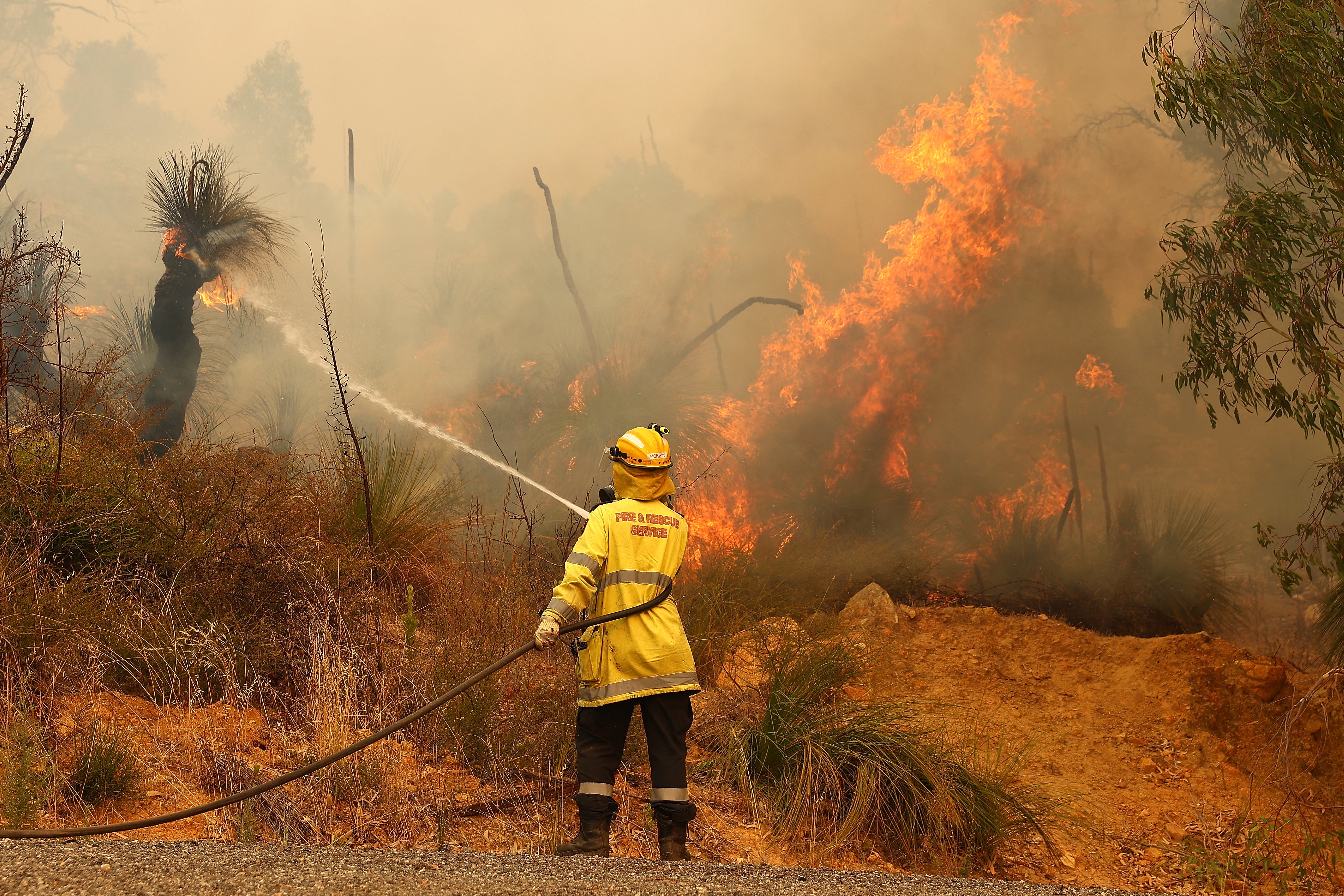Australia’s forests became fuel for catastrophic fires after British colonisation, study finds
Indigenous fire management practices hold key to ‘safer, more sustainable future’, say scientists

Australia’s forests now carry more flammable fuel than they did before British colonisation, according to a new study that sheds light on forest management practices to prevent catastrophic bushfires.
Changes in vegetation, fuel structures, and connectivity in the continent brought on by European settlement, combined with climate change impacts on fire weather and drought have preconditioned some of Australia’s forests for wildfires to an unprecedented extent, say the researchers, including those from the University of Melbourne.
The study, published in the journal Frontiers in Ecology and Environment, found that forests and woodlands across southeast Australia, managed traditionally by sophisticated indigenous fire-management practices, contained fewer shrubs and more grass before colonisation.
Scientists used data from fossil pollen, charcoal compilations, and novel methods to model prehistoric and ancient ecology across 52 sites in Australia’s southeast to determine changes in land cover and fire activity before and after British colonisation.
Since different plants produce pollen in different sizes and shapes, researchers could deconstruct the past ecology of the region, including the proportions of trees, shrubs, and grasses and herbs, and how these changed over time.
They found that before British colonisation in 1788, forests in the southeast were less dense, and less flammable.
The study revealed that grass and herb vegetation dominated southeast Australia before colonisation, and accounted for about half the vegetation across all the 52 sites, but after European settlement, the shrubbiness in forests and woodlands in the region grew by up to 48 per cent with shrubs replacing the grassy areas.
This shrub increase following British colonisation represents a “massive accumulation of fuel loads”, scientists wrote in The Conversation.
Based on the findings, they believed indigenous fire management “holds the key to a safer, more sustainable future on our flammable continent”.
While climate change is causing fire-weather in several regions of the world, including in the state of California in the US, and drought and high temperatures were factors that influenced the Black Summer bushfires in 2019-2020 in Australia, scientists said the climate crisis alone cannot be blamed for the massive fires.
They said that large amounts of flammable organic matter in the forests such as leaves, twigs, branches and trunks led to fires easily, reaching tree canopies and causing catastrophic “crown” fires.
But before British invasion of Australia’s southeast in 1788, researchers said that these flammable vegetation were managed by the indigenous population who have inhabited the continent for at least 65,000 years.
Oral tradition, historical and ethnographic sources suggest the native population used sophisticated systems of land management, including skilful “cultural burning”.
The indigenous cultural burning practices involved frequent, low-intensity fires with different altitudes experiencing similar levels of biomass burning.
These practices, scientists say, altered the balance between herbaceous and woody biomass, and limited shrub density in understory vegetation.
The sophisticated controlled fires maintained patchy open woodlands and savanna-like landscapes across a broad range across southeast Australia, and led to a “fine-grained vegetation mosaic comprising grassy areas and scattered trees”, they noted.
But authorities in colonial and subsequent governments dispossessed Aboriginal people of their lands, and ignored their cultural forest management practices.
These governments applied “clear-cutting” and “intense firing” to create large-scale patches in areas deemed suitable for agricultural activities, while leaving the forests in rugged terrain unmanaged or exploited them for timber.
Scientists say the post-colonial practices have caused large parts of the land in the continent to become “overgrown with shrubs,” contributing to unprecedented wildfire risk in these areas.
To manage the current fire crisis, they said traditional ecological knowledge and long-term ecology must be considered.
“Australia’s forests need fire, deployed by capable Indigenous hands. Without it, increased fuel loads, coupled with climate change, will create conditions for bushfires bigger and more ferocious than we’ve ever seen before,” the researchers said.
Join our commenting forum
Join thought-provoking conversations, follow other Independent readers and see their replies
Comments
Bookmark popover
Removed from bookmarks